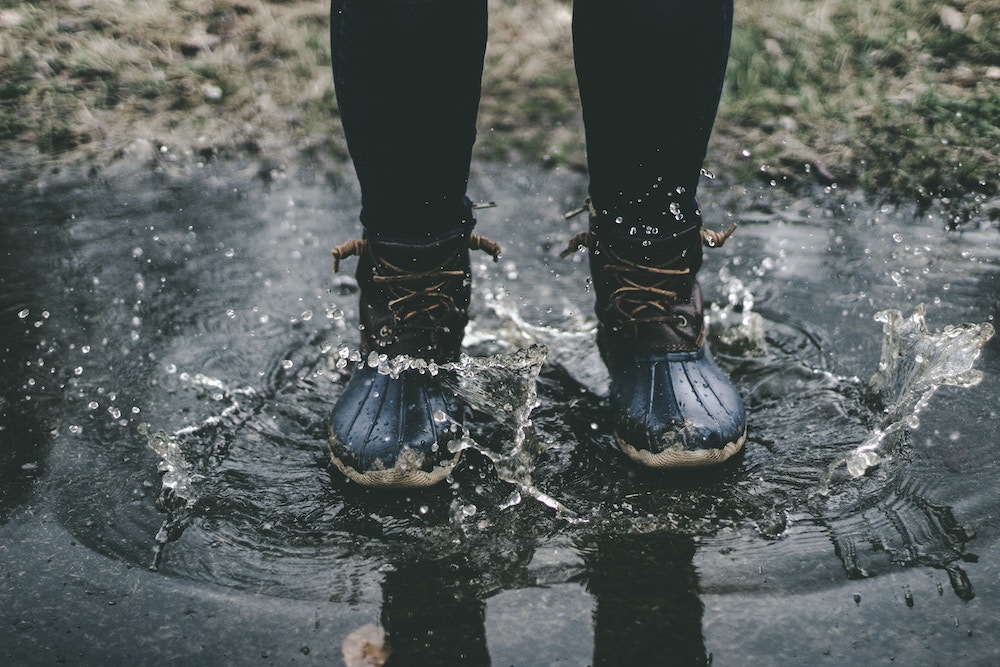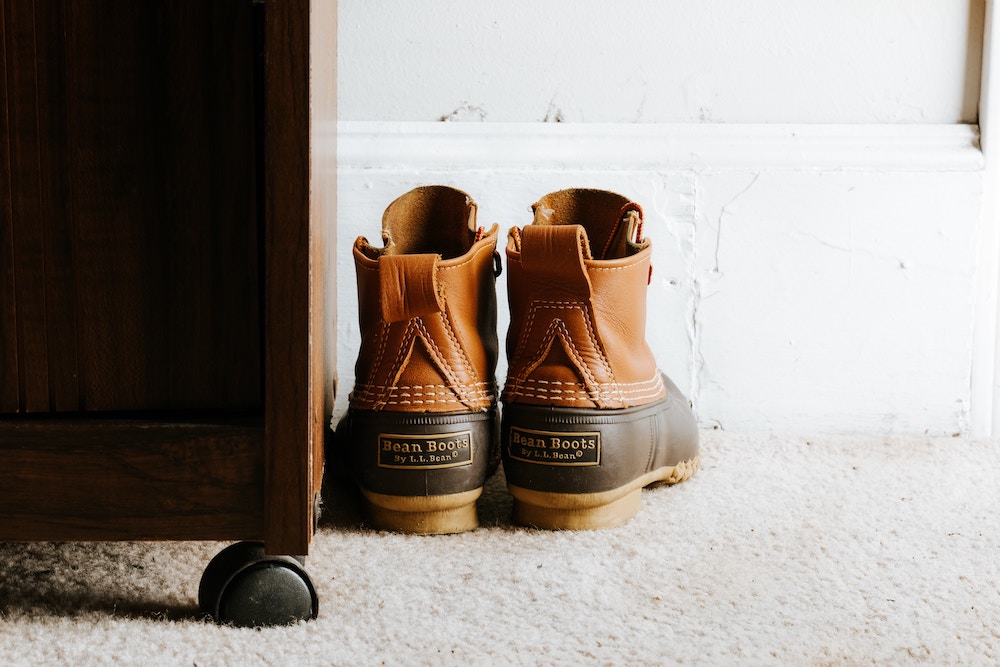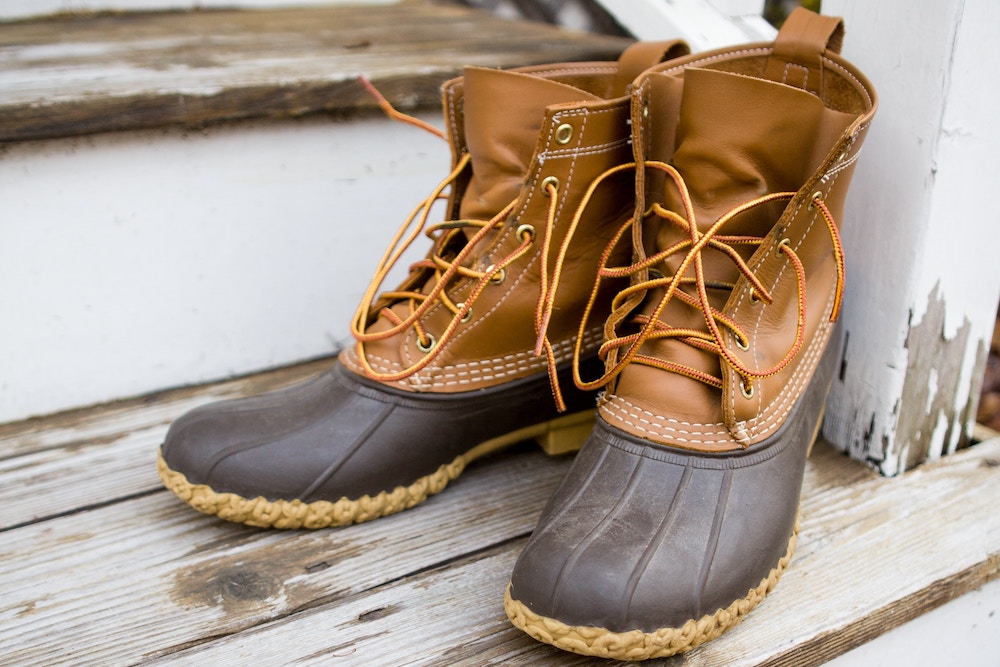
Hiking is one of the most popular recreational activities in the USA.
It’s recorded as the fourth most popular sport, right after fishing.
Statistics show that more and more people choose this way to connect to nature, attributing to the rise in the number of hikers in the past four years.
If you’re an avid hiker as well, then you probably know the importance of preparing proper hiking gear before you set out on the trail.
Most importantly, shoes. Regular hikers will require dedicated hiking boots, but are duck boots good for hiking?
Duck boots are waterproof, durable, and spacious. While they’re great for protecting your feet when you’re outdoors, you should give them a second thought while wearing them on a hiking trip.
Lucky for you, we’ve compiled all the details you need to answer this question.
We’ll start with what to look for in the perfect hiking boots, and compare that to the features of duck boots to get to the final decision.
What Are the Features of Ideal Hiking Boots?
To figure out the answer to "Are duck boots good for hiking?", you’ll need to know what exactly makes a shoe good for hiking.
It’s simple: the boot you choose for hiking should have an equal level of comfort and protection.
Not too soft and feeble that can damage your feet along the trail, and not too tough and resistant that makes you uncomfortable in the long run.
1. Boot or Shoe Type
Every hiker has a different terrain ahead of them, which makes choosing hiking boots even trickier.
You’ll find different types of hiking boots to choose from:
- The first one is a more durable rendition of running shoes. Designed for light, daytime hikes, they’re breathable and comfortable.
- Another are considered the toughest shoes, which are designed for mountaineering and long-distance hiking along transverse terrains. These shoes have more features like ankle support and are slightly heavier in weight to prevent injuries to the feet along tough trails.
Other than that, here are the main features to look for in your hiking boots.
2. Material
Quite literally, to select a good pair of hiking boots, the first thing you’ll need to check is what they’re made of because if you end up choosing the wrong material, you could incur serious damage to your feet and end up exhausted by the end of the day.
The real challenge is choosing hiking boots that are comfortable and protective at the same time.
For example, mountaineering boots are made of full-grain leather.
The material is highly durable, provides the ultimate protection, and is completely water-resistant.
Otherwise, if you’re targeting lightweight shoes for long, casual hikes split-grain leather boots are a great option.
They’re water-resistant and comfortable.
Although they’re not as protective as full-grain leather, they’ll feel a lot lighter on your feet.
Besides leather, there are various synthetic materials available for hiking boots, such as nylon and polyester.
Each of them has their level of comfort, breathability, and protection, so you’ll have to assess them according to your hiking habits.
3. Height and Cut
Hiking boots come in different cuts and heights to facilitate various hiking trails and terrains.
Lightweight boots usually come with a low-cut style, which isn’t quite efficient in preventing a sprained ankle.
On the contrary, mid-cut and high-cut boots are best when it comes to long trails since they completely cover your feet and give maximum protection.
Duck boots come in high and mid-cuts as well, so if you have duck boots that cover your ankles, you can probably wear them on your next hiking trip.
4. Outsoles and Traction
This is perhaps the most important feature to look for in the ideal hiking boots.
The outsoles are integral parts of hiking boots, as they’re mostly in contact with the ground.
Rubber outsoles provide the best traction and grip to cover tough terrains.
If you spend your time thinking about slipping, your hike will end up exhausting you both mentally and physically.
Duck boots lack traction to some extent, so they may not be suitable for damp, mountainous hikes.
What Are Duck Boots?
Now that we’ve clarified the basic requirements for hiking boots, let’s evaluate duck boots to check whether they fit the criteria or not.

The Origin
Another name for duck boots is Bean boots.
They're named after their creator, Leon Leonwood Bean, the founder of the ceremonious L.L Bean Company.
Mainly, a duck boot is a cross between a rubber work boot and leather hunting boot.
It basically has a rubber bottom, combined with a leather upper part that provides the comfort and protection of both the materials in one design.
Fast fact, duck boots get their name from the purpose of their creation.
As they were used by hunters, especially duck hunters who spent their time lurking in damp areas, they began to be referred to as duck boots.
After their immense popularity, people began to use them for everyday use to avoid spoiling their feet in muddy and wet areas, but the interesting name prevailed.
Purpose
They’re intended initially as hunting boots since their leather part gives you the flexibility and comfort for effortless movement, while the rubber outsole provides water resistance.
That makes them good for hiking as well, to an extent, but they have the downsides that would make them inefficient for professional, avid hikers.
Are Duck Boots Good for Hiking?
After getting pieces of information about hiking boots and duck boots, you know that duck boots aren't right for the job.
Features Making Duck Boots Good for Hiking
Duck boots do have some features that make them good for a hiking trip or two, which we will discuss first to give an honest representation.
1. Water Resistance
Similar to most hiking boots, duck boots are made of water-resistant materials.
The sole and the lower part of the shoe are made out of durable, water-resistant rubber, combined with full-grain leather on the upper part.
That means, duck boots will help you avoid wet feet, which is great if you’re trekking along slushy tracks.
Also, while hiking, you can encounter rain, puddles, and small streams.
In these cases, water-resistant boots can be lifesavers because wet feet can make you uncomfortable and cause blisters and rashes on your feet.
As we mentioned, duck boots are designed especially to protect against water, so if that’s what you need, you can rely on duck boots anytime.
2. Additional Support
The original duck boots by L.L Bean also feature a steel shank that provides extra support by making the sole less flexible.
That means you’re at a lower risk of slipping or twisting your ankle.
That’s another great feature for hiking since you’ll need constant protection if you’re trekking on complicated, rough trails.
Just be sure to check whether or not your brand of duck boots has this feature.
Usually, you'll only find them in the original L.L Bean boots.
3. Comfort
While hiking, the most important aspect is to ensure your comfort.
Without a comfortable pair of shoes, you’re most likely to have a devastating experience that’ll ruin your concept of hiking for your lifetime.
When it comes to comfort, duck boots tick all the boxes.
The full-grain leather protection combined with the flexible and water-resistant rubber provides maximum breathability.
Besides that, duck boots are not too heavy, so your feet won’t feel tired even if you’ve been wearing them for extended periods.
4. Easy to Maintain
There’s no fun hiking if you don’t get your boots dirty.
At the end of an enjoyable hike, the worst part is that you’ll probably be left with boots caked with mud, shrubs, and vegetation.
That’s why hiking boots should be easy to clean to make the ordeal bearable.
Duck boots require next to no effort to clean out.
They’re waterproof and lightweight, which means you can safely spray them with water or hold them under a jet of water, and they’ll be as clean as new.
Also, they take less time to dry out as compared to other boots, so you’ll be ready for another hike the very next day.
Features Making Duck Boots Not Good for Hiking
Now that we’ve been through the positives, let’s look at the negatives.
Although many reasons make duck boots seem like the perfect option for hiking, they’re not. Here's why:
1. Not Breathable Enough
Full-grain leather is not as breathable as other popular synthetic materials.
Lack of breathability means you’ll sweat a lot in your duck boots.
Not only will that make you uncomfortable if you’re walking along the trail, but it can also cause blisters.
That’s similar to if you were wearing boots too tight for you.
Remember, this doesn’t mean that breathability won’t be a problem when it’s cold outside.
Duck boots don’t allow air to enter the boots, which leads to sweating and uncomfortable sensations even in cool weather.
If you’re not comfortable, your hiking trip will most likely be a disaster, so you shouldn’t go for duck boots.
2. Low Traction
Duck boots do have a lot of traction due to their rubber outsoles.
Still, that’s just not enough when it comes to tackling wetlands, snow, or puddles while hiking.
If you’re a beginner and are planning to walk down an easy terrain, they might work for you, but for high-level, mountainous terrains, you’ll need more traction for your safety.
Believe it or not, when you’re fearful about slipping, you’re actually putting more pressure on your feet.
This ultimately makes you more exhausted towards the end.
Thus, if you’re taking on a steep, damp hiking track, it’s better to invest in dedicated hiking boots than use your duck boots to avoid unpleasant accidents.
3. Large Inner Cavity
This probably doesn’t seem like a negative aspect, right?
Who doesn’t like a little extra room in their boots?
However, in the case of long hikes, about five miles or more, extra space in your boots will cause unwanted friction between the boots and your feet.
This friction can eventually lead to blisters and rashes as well and lead to an uncomfortable experience.
4. No Ankle Support
Unless you’re a seasoned hiker taking up challenging trails, you won’t need much ankle support.
In such cases, duck boots have enough ankle support for you.
Nevertheless, to qualify as proper hiking boots, duck boots do not have enough ankle support.
That means on rocky, steep, and uneven terrains, you can easily sprain or twist your ankle since it’s not protected in any way.
To avoid such accidents that’ll turn your hike into a horrible memory, choose a good pair of hiking boots rather than sticking to your everyday duck boots.
What Are the Other Uses for Duck Boots?
It’s clear that if you’re serious about hiking, you won’t go on the trail in your duck boots.
Anyway, that doesn’t mean your duck boots are completely useless.
Here are some ways you can put your duck boots to optimum use.

1. Make a Fashion Statement
It’s probably hard to believe, but nowadays, duck boots are available in all sorts of styles and colors.
There are lots of brands that have adopted the basic idea and built upon it to create trendy and accessible footwear.
Wear them on your next big event to stand out in the crowd.
2. Safe Commute in Wet Weather
All of us hate getting our feet wet during the rainy season, and that’s when duck boots come in to save the day.
They’re water-resistant and protective enough to keep your feet dry on your way to work or while you’re running errands around the city.
3. Traveling
Nothing like the hardcore protection of full-grain leather and the comfort of rubber combined to give you comfortable, practical travel footwear.
Especially if you’re going out camping or planning a trip to Europe on snowy days, duck boots are a great option to take along with you.
Final Words
The answer is simple: duck boots are not good for hiking since they lack traction, aren’t comfy enough, and have no ankle protection.
That can lead to serious accidents and discomfort during your hike.
That said, if you’re going for casual, short hikes, go ahead and use your duck shoes.
They’re water-resistant and protective to some extent, but if you want the ultimate hiking experience, don’t settle for them.
Get some serious hiking shoes to make your trip perfect!
Happy hiking!
